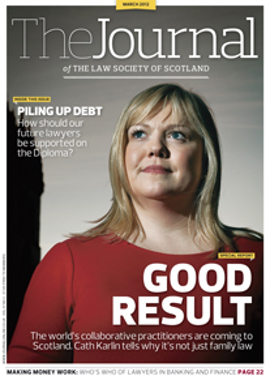Speak with impact
As many businesses start a new year, CEOs and managing partners will be planning their diaries and looking to prepare for forthcoming speeches and presentations. This will include positive words of encouragement for employees and clients alike.
Some bosses will choose to dust off previous materials; others will go down the informal route and make it up on the day. Unfortunately, too few will give their speech the time and preparation required, missing the opportunity to make a positive and motivating impact on their teams and clients.
Having worked for over 10 years with management teams helping to improve their presentation performance, I firmly believe that everyone has the capacity to be really good. With some insight and practice we can all move from being an average presenter to a really polished, impressive communicator.
It is well accepted that speaking in a room full of people can be a nerve-wracking experience, but the key is to act naturally and be yourself. It really doesn’t have to be that daunting: as long as you have a toolkit to help you through it, everyone can communicate with impact and influence.
Personal style
Many people like to work under pressure, but when writing a presentation it is preferable not to leave it to the last minute to put pen to paper. My advice is to write the content a couple of days before, the more preparation you do the better, because it takes the pressure off you on the big day. Speak to colleagues about what to include or even carry a notepad in the weeks before to jot down ideas for any “eureka” moments.
Also remember that the aim of a presentation is not only to get your points across but also your personality. Everyone is unique with their own individual style of communicating. It is really important that when making a presentation, you come across as yourself. I recommend writing in the style in which you would normally speak; this means you will sound conversational, being yourself. A trap people often fall into is to write formally using more elaborate and complicated sentences than they would naturally use. This is an area to watch for technical specialists such as the legal profession, where the overuse of business language may make it harder for listeners to digest what’s said and therefore they will not remember it.
Conversation aids
There are many things people do unconsciously in everyday conversation, such as pausing to think, or pausing to let the listener think about what is being said. This happens naturally because the person speaking waits to get feedback from listeners, with a nod or yes, before carrying on to the next point.
However, in a more formal environment, where there are several people in the audience, the speaker is less likely to get these signals and it’s easy, without such feedback, to start wondering whether people are following or if their attention is wandering.
This can be disconcerting for the speaker, as they feel they are facing a blank wall, which adds pressure, adrenalin kicks in and they speed up. But by speeding up, the ideas will be delivered too quickly and the listeners won’t have time to keep up, which usually means the audience loses track and switches off. I encourage the use of silence, pause between ideas as this gives the audience time to digest what is said, and it also shows the speaker is in control.
More engaging
Another critical factor is the structure of what’s being said and how to deliver it. Again, using a conversational approach is key. Think about your audience – who are you talking to, what are they interested in? In conversation we tend to think about who we are speaking to and make it relevant to them. The more you can find out about your audience the better – the chances are you will communicate slightly differently to colleagues as you would to clients. Where technical language and corporate jargon may be appropriate for an internal presentation, it can be the downfall of a client meeting or pitch. Keep language simple and tone down the jargon. By including metaphors, analogies, examples and stories a presentation can be made more engaging and, more importantly, help people remember what’s said. This is what keeps them interested and focused. These are tools we use every day in conversation when talking to colleagues, clients, family and friends, so use them in presentations too.
In terms of using notes or a script, having prompts that support you through the process is a good idea. Prepare notes, stick to them and you will be clear, concise and come across as being well organised and credible.
By following these simple rules and using a conversational style, the business presentation or pitch can make an impact every time.
In this issue
- Capacity and undue influence
- Tolent clauses in construction contracts
- Mending the safety net
- Keeping it in the family
- Speak with impact
- The complication of tax simplification
- Reading for pleasure
- Opinion column: SIHRG
- Book reviews
- Council profile
- President's column
- The price is right?
- Learning on the slate
- A better way to talk
- Plain sailing?
- Kilbrandon in the 21st century
- Who's who in banking and finance
- Corporate speak
- Here we go again...
- Deadlines in negotiations
- Scottish Solicitors' Discipline Tribunal
- Shuffling walnuts?
- A bold step forward
- Action to safeguard vulnerable clients
- Buildmark acceptance goes online
- Law reform roundup
- Escape from disaster?
- Ask Ash
- Update branches out
- Business checklist
- Work, the deciding factor






